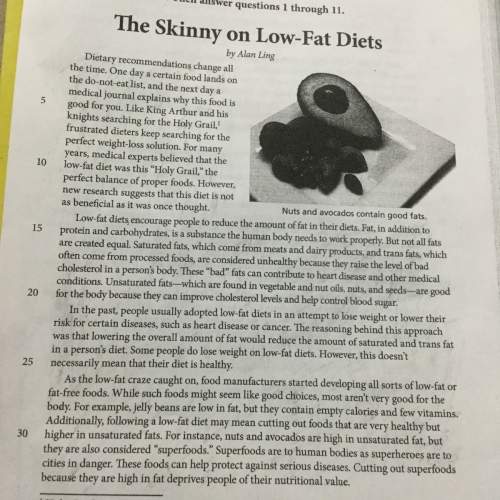
1. Which phrases from the passage show that the author thinks that the price of cacao is based on supply and demand?
2.Analyze the extent to which the concept of fair-trade chocolate contributes to the central idea of the text. Include at least four details from the passage to support your response.
The chocolate that many of us enjoy is made from cacao seeds through a long process that starts in the rain forests of Central America and West Africa, among other places, and moves to sparkling clean factories before ending up on our grocery store shelves. Few chocolate lovers, however, realize how much time and effort it takes to produce this cherished delicacy.
Without cacao, there can be no chocolate, as the cacao seed is the basis for chocolate as we know it. Cacao is grown by farmers in tropical rain forests. Like other farmers, cacao growers must continually monitor their trees to make sure that they are free of pests, molds, and diseases that can infiltrate an entire crop and destroy it. A cacao tree takes three to five years to mature and start producing seeds, so the care that a farmer gives to a young tree is an investment in the future.
When the pods are ripe, a multi-step harvesting process begins. Unlike the majority of crops nowadays, cacao cannot be harvested by machine. Farmers must cut pods from the trees using machetes or knock them down with sticks. Next, the farmers break open each thick pod by hand to remove the beans and surrounding pulp. The beans and pulp are then packed into bins or wrapped in banana leaves, triggering a fermentation process that lasts up to seven days. This fermentation process mitigates the bitter taste of the cacao beans and produces flavors more like those we associate with chocolate. Finally, after fermentation is complete, the beans are placed in the sun to dry and to prevent mold growth. This step takes another five to seven days. The cacao harvesting process is extremely labor intensive and requires a lot of back-breaking work.
When the cacao seeds first arrive at a chocolate factory, they are cleaned of all dirt and debris. Next, they are placed in large rotating ovens and roasted at 250°F for up to two hours. At this point, they turn brown and begin to look like coffee beans. The roasted beans are then graded and sorted by size through a process called winnowing. Finally, the shell of each bean is removed to extract the nibs, or broken seed parts.
Machines grind up the nibs, turning them into a liquid called chocolate mass, a pure, rough form of chocolate. Chocolate mass is mixed with other ingredients to create different chocolate products. For example, sugar, cocoa butter, and vanilla are used to create dark chocolate, while sugar, cocoa butter, and milk solids are used to make milk chocolate.
Farmers sell their seeds to chocolate makers around the world through an exchange that trades in coffee, sugar, and cocoa, similar to a stock exchange. The farmers are often paid for their crop in advance of the harvest by traders who are trading on a futures market. The final price is, of course, dependent on the quantity and quality of the crop, with the result that the price of cacao seeds fluctuates wildly based on supply and demand. If worldwide demand exceeds production in a given year, the price will soar; conversely, if farmers harvest more cacao than can be sold, the market is flooded with product and the price drops. A low price can devastate the economy of a country that relies on cacao exports.
Due to the strenuous amount of work needed to harvest cacao, workers’ rights disputes have plagued the chocolate industry for many years. Some companies have exploited workers in disadvantaged countries where cacao is grown so that they can buy the seeds cheaply and sell more product. However, today some chocolate companies that pride themselves on their ethics are trying to make “fair-trade” chocolate. This means that the wages paid to the workers are commensurate with the difficulty of the work. Getting what is considered a fair wage allows farmers in poor countries to build sustainable businesses and helps the people who are doing the difficult manual labor to thrive. The negative is that fair-trade chocolate is usually more expensive than non-fair-trade chocolate.

Answers: 2


Another question on English

English, 21.06.2019 23:30
Which of these statements is evaluative in nature a) the short passage creates a brilliant and sketch of gabriel b) resulting from the fact that gabriel is observant, he is also reflective c) the way gabriel looks at his wife shows that he is a detached onlooker d) that gabriel is observant is evident from the minute details he notices
Answers: 3

English, 22.06.2019 10:30
From part ii of the novel, pick one paragraph in which the author uses semicolons. read over your chosen paragraph and in 200 words, discuss the effect of using semicolons in order to create longer phrases.
Answers: 3

English, 22.06.2019 11:30
Identify and evaluate the specific strategies used to persuade the audience in gettysburg address
Answers: 2

English, 22.06.2019 11:50
You are writing an essay arguing in favor of school uniforms. which would make the best conclusion statement for usa
Answers: 2
You know the right answer?
1. Which phrases from the passage show that the author thinks that the price of cacao is based on su...
Questions

Mathematics, 13.05.2021 19:30

Chemistry, 13.05.2021 19:30


Mathematics, 13.05.2021 19:30









Mathematics, 13.05.2021 19:30


Mathematics, 13.05.2021 19:30

English, 13.05.2021 19:30


Mathematics, 13.05.2021 19:30

History, 13.05.2021 19:30




